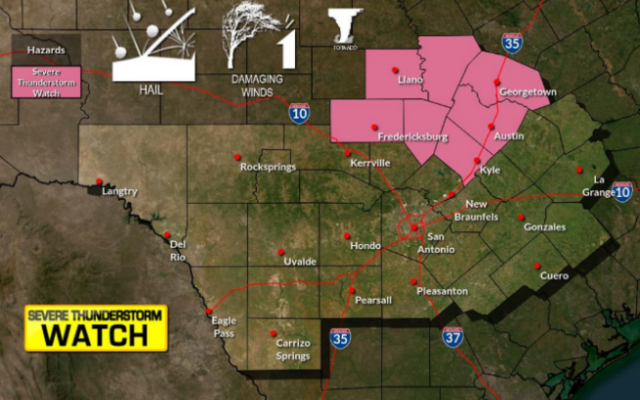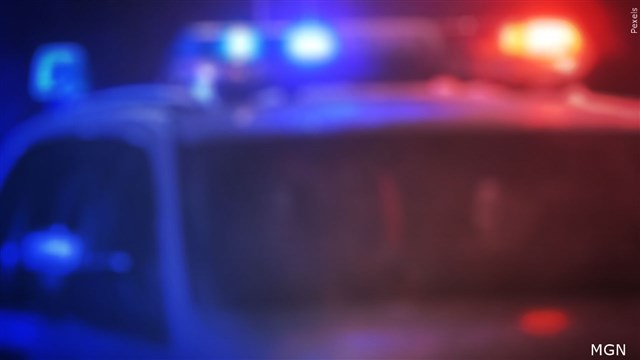Canada’s COVID-19 protests threaten border trade with US

OTTAWA, Ontario (AP) — Canadian lawmakers expressed increasing worry Tuesday about the economic effects of disruptive demonstrations after the busiest border crossing between the U.S. and Canada became partially blocked by truckers protesting vaccine mandates and other COVID-19 restrictions.
Ontario Premier Doug Ford called the Ambassador Bridge between Detroit and Windsor, Ontario, a “vital trade artery.” It carries 25 percent of trade between the two countries.
“Such blockades will have serious implications on our economy and our supply chain,” Canadian Transport Minister Omar Alghabra said in Ottawa, the capital. “I’ve already heard from automakers and food grocers. This is really a serious cause for concern.”
Speaking in an emergency debate late Monday in Parliament, Prime Minister Justin Trudeau said the protesters are “trying to blockade our economy, our democracy,” and it has to stop.
The daily demonstrations staged by the so-called Freedom Truck Convoy began in Ottawa, where demonstrators have used hundreds of parked trucks to paralyze parts of the capital for more than 10 days. The protests have infuriated people who live around downtown, including neighborhoods near Parliament Hill, the seat of the federal government.
Dave Weatherall, a federal civil servant, lives near the truckers’ prime staging area in a city-owned parking lot outside of the downtown core. “They’re using the lot to terrorize people in Centretown,” he said, asking why the city has allowed the convoy to remain parked on its property for free and without intervention.
“It’s the first time since having kids that I’ve seriously wondered about the world we brought them into. I always figured they could handle most things the world will throw at them, but this feels different,” he said.
Demonstrations have spread to locations on or near the Canadian border, including the Ambassador Bridge, where a protest caused long backups and at one point stopped traffic in both directions. The bridge remains blocked on the road to Canada.
At a news conference after Trudeau spoke, trucker spokesman Tom Marrazo reiterated that the protesters want to overthrow the government. Marrazo said he is willing to meet with the opposition parties and the nation’s governor general, the representative of Britain’s Queen Elizabeth II as head of state.
All three opposition parties technically could join together and defeat the government because Trudeau does not have the majority of seats in Parliament, but that is highly unlikely because the vast majority of lawmakers have condemned the protests.
Protesters have also closed another important U.S. Canada border crossing in Coutts, Alberta.
“The border at Coutts continues to open and close at the discretion of a group of protesters who believe they are above the law. It has to stop,” tweeted Rachel Notley, Alberta’s former premier and current opposition New Democrat leader.
Protesters have said they will not leave until all vaccine mandates and COVID-19 restrictions are lifted. They also called for the removal of Trudeau’s government, though it is responsible for few of the restrictive measures, most of which were put in place by provincial governments.
François Laporte, the president of Teamsters Canada, which represents over 55,000 drivers, including 15,000 long-haul truck drivers, said the protests do not represent the industry in which 90% of drivers are vaccinated.
The Freedom Convoy “and the despicable display of hate lead by the political Right and shamefully encouraged by elected conservative politicians does not reflect the values of Teamsters Canada, nor the vast majority of our members, and in fact has served to de-legitimize the real concerns of most truck drivers today,” Laporte said in a statement.
Joel Lightbound, a lawmaker for Trudeau’s Liberal Party, rebuked his leader Tuesday for dividing Canadians and said his government needs to create a road map for when coronavirus measures should be lifted.
“It is time we stopped dividing people, to stop pitting one part of the population against each other,” Lightbound said. “I can’t help but notice that both the tone and actions of my government changed drastically on the eve and during the last election campaign. From a positive and unifying approach a decision was made to wedge, to divide and to stigmatize.”
Trudeau continues to take a hard line against the protesters. The prime minister said during Monday’s Parliament debate that everyone is tired of COVID-19, and that the restrictions will not last forever. He noted that Canada has one of the highest vaccination rates in the world.
Meanwhile, the Canadian province of Saskatchewan became the first in the country to announce a plan to lift all COVID-19 restrictions. Saskatchewan officials said they will no longer require COVID-19 vaccine passports starting Monday. The province with a population of almost 1.2 million people is also ending its indoor mask mandate at the end of the month.
Conservative Premier Scott Moe said the benefits of providing proof of vaccination to enter businesses such as restaurants no longer outweigh the cost. He said the passport has created deep divisions in the province.
“I suspect other provinces will do something similar in the next while. I would ask the federal government as well on behalf of all Canadians to continue to revisit the orders that they have in place,” Moe said. “We are incumbent to remove them when they have run their course.”
Bruce Heyman, a former U.S. ambassador to Canada, noted that the U.S. and Canada have one of the most significant trading relationships of any two countries in the world, with about $2 billion in daily trade of goods and services. Any blockade of the Ambassador Bridge cannot continue for long as it also critical to the U.S. supply lines, he said.
The bridge “is also a key access crossing for cross-border jobs such as Canadian nurses in Detroit hospitals and, of course, cross-border access to medical care,” Heyman said.
____
Gillies reported from Toronto.
You Might Also Like



